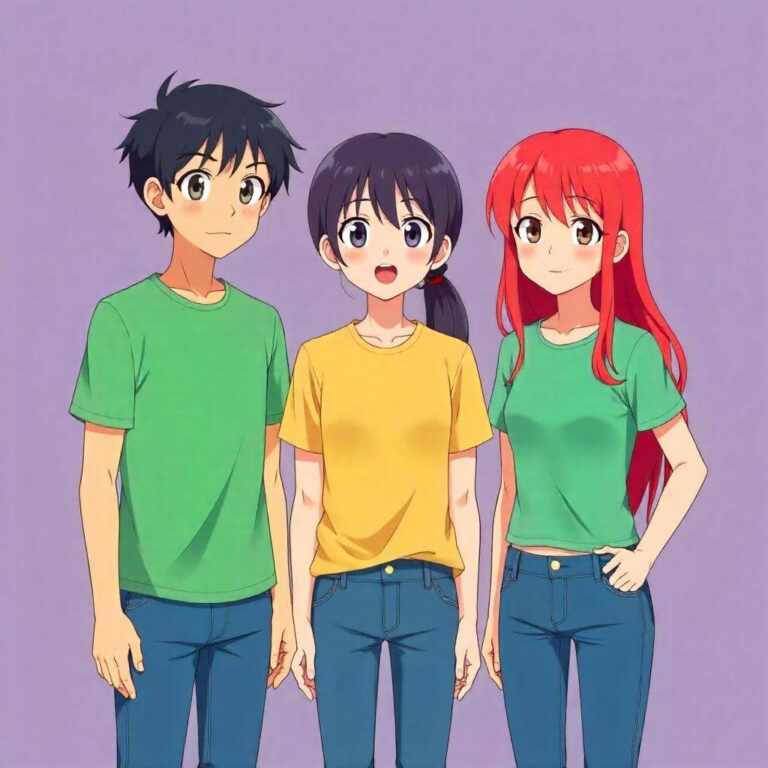Reader’s Question:
Why is it called “Chuunibyou”?
Understanding “Chuunibyou”: A Journey Through Adolescence and Imagination
When I first stumbled upon the term “Chuunibyou,” I was taken back to my own middle school days, those awkward years filled with teenage angst, imagination, and, let’s be honest—a bit of cringeworthy behavior. So, why is
it called “Chuunibyou”? Let’s dive into this fascinating concept that perfectly encapsulates a peculiar phase of adolescence, especially in Japan.
What is Chuunibyou?
For those who aren’t in the know, “Chuunibyou” (中二病) literally translates to “middle school second-year syndrome.” It’s a term used to describe the behavior often exhibited by 12- to 14-year-olds, particularly boys in their second year of middle school. This phase is like a rite of passage—a time when kids start to explore their individuality but sometimes express it in over-the-top ways. Think of it as that intersection between childhood wonder and teenage rebellion. As the user pointed out, you’ll often see kids sporting fingerless gloves, donning dark clothing, or even pretending to wield magical powers—it’s like a mini cosplay convention right in the schoolyard! And yes, many of us probably had a phase where we wanted to be a brooding hero battling evil forces, even if that was just in our imaginations.
My Personal Encounter with Chuunibyou
I can still vividly remember my own Chuunibyou phase. I was about 13 when I fully embraced this odd blend of fantasy and reality. Growing up in Osaka, I was heavily influenced by anime and manga, which made it all the more tempting to weave my own little stories where I was the protagonist. Oh man, the cringe is real when I think back! I’d strut around the playground wearing my favorite oversized hoodie, pretending I had the power to control the elements, and yes, there were moments when I thought wearing a cape would somehow elevate my status among my peers. Spoiler alert: it didn’t. But there I was, letting my imagination run wild while my friends just shook their heads, half-amused and half-embarrassed. But that phase was more than just silly dress-up. It was a crucial time for self-expression, a moment when I was figuring out who I was and who I wanted to be. Like many, I was also heavily influenced by the anime I consumed. Characters battling dark forces and embracing their uniqueness spoke to me. I wanted to be that hero, even if it meant looking a little ridiculous in the process.
The Aesthetic Appeal
One of the most striking aspects of Chuunibyou is its unique aesthetic. The imagery associated with it—dark clothing, skull motifs, and those fingerless gloves—is not just random; it speaks to the deep-seated desire for individuality and rebellion. I mean, who hasn’t thought about how cool it would be to have a secret identity or to be a lone wolf fighting against the tides of mediocrity? I remember visiting a themed café in Akihabara that catered to this very demographic. The walls were adorned with posters of characters embodying Chuunibyou traits—characters who were both relatable and aspirational for kids in that age group. It was a literal celebration of that teenage chaos, and you could just feel the energy in the air.
Why It Resonates
But let’s be real: Chuunibyou is much more than just a phase; it’s a form of coping with the whirlwind of emotions and changes occurring during adolescence. Puberty is tough—one minute you’re a carefree kid, and the next, you’re grappling with feelings you can’t quite articulate. Chuunibyou serves as a sanctuary for kids, a way to escape into a world of their own creation where they’re in control. This resonates with me because, even as a father now, I see how my own child navigates similar waters. Kids today still have their quirks and imaginative escapades, even if they manifest differently. My kid loves to dress up as superheroes and stories that spark their imagination, and honestly, it warms my heart. I want my child to embrace creativity—just as I did, even if it comes with a sprinkle of awkwardness.
A Reflection on Growth
What’s beautiful about the Chuunibyou phase is that, while it can seem silly, it’s also a sign of growth. It’s a way for kids to explore their identities and experiment with different personas. I mean, who hasn’t looked back at their teenage years and cringed a little? But it’s also a time of creativity, friendship, and yes, even a sprinkle of drama. As we grow older, many tend to shake off that Chuunibyou phase and settle into more conventional roles. But I believe that the spirit of creativity and imagination doesn’t just vanish. Instead, it evolves. As adults, we find other outlets—like art, writing, or even parenting—where we can express that same vibrant creativity we once had as kids.
Conclusion: Embracing Your Inner Chuunibyou
So, next time you hear the term “Chuunibyou,” remember that it’s not just a label for awkward behavior. It’s a celebration of youth, imagination, and the struggle for identity during those tumultuous years. It’s an acknowledgment that we all go through phases of intense self-expression, some of which might make us cringe in hindsight. In a world that sometimes tries to box us in, embracing your inner Chuunibyou can be liberating. After all, who says you can’t rock that old cape or let your imagination run wild once in a while? Whether you’re a parent, a teen, or simply a nostalgic adult, let’s cherish the quirky, creative spirit that Chuunibyou represents. So go ahead—wear those fingerless gloves, embrace your unique style, and maybe, just maybe, let your imagination soar a little higher!



